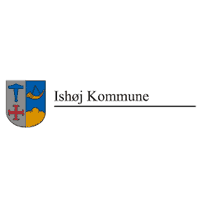The physical and mental work environment is crucial for job satisfaction, motivation and productivity in your organization. A good physical and mental work environment also contributes to lower costs due to accidents and occupational diseases.
At LEAD, we help your organization create the foundation for a good working environment that can reduce sick leave and reduce employee turnover.
Physical and psychological WPA: Process and evaluation
By conducting an assessment of the work environment in your organization, you will gain insight into where you can take action to strengthen the physical as well as the mental work environment.
The evaluation of your physical and psychological work environment is based on research-based knowledge, legal requirements and the latest guidelines from the Danish Working Environment Authority. LEAD can assist you with advice on how to carry out a physical and psychological workplace assessment (APV) at your workplace, or we can carry out the entire process together with you and follow up on any results that require action and prevention.
Many of the companies we have helped over the years have benefited greatly from our comprehensive 3-in-1 measurement, which includes questionnaire development, workshop execution, dissemination of results and support in implementing change processes.
At the bottom of the page you can see testimonials from our satisfied partners.
What is a work environment?
The work environment is about the conditions and surroundings that employees find themselves in while performing their work. It includes both the physical and psychological conditions in the workplace, and a good working environment is a crucial factor in the overall wellbeing, health and safety of employees.
Many studies suggest that a good work environment means happier employees who work more efficiently, which ultimately has a positive impact on the company's bottom line.
For example, see this study published in the journal Public Money & Management, where the authors conclude that organizations that invest in "intellectual assets" - i.e. investments in the interpersonal factors that make up a good working environment - outperform similar companies by 13.3% in productivity.
See also this article by the European Agency for Safety and Health at Work, which states that every euro invested in the working environment yields a return of 2.2 euros. In other words, a good working environment is in many ways a prerequisite for a productive business, and investments in the working environment should therefore be considered a profitable exercise.
A good working environment can lead to fewer sick days, higher productivity and job satisfaction. Conversely, a poor working environment can lead to stress, workplace accidents and an increased risk of physical and mental illness.
A good working environment must take into account the needs of employees and ensure that work tasks can be carried out in a safe and healthy way. It is important to identify and manage any risks and problems in the workplace through a workplace assessment (APV) and an ongoing dialog between employees and management.
Do you want to be even better equipped to conduct a WPA and strengthen the work environment in the workplace?
The "Management of Psychological Work Environment and Wellbeing" program gives you insights and methods to create a better work environment for your employees.
The program is especially relevant if you have challenges with high sickness absence, high employee turnover or widespread stress among employees.
Read more about our research-based education
Why is health and safety important?
The work environment is important because it is a key factor in the overall wellbeing of employees, which can lead to fewer sick days, greater productivity and higher job satisfaction. Conversely, a poor work environment can have serious consequences for the physical and mental health of employees and the success of the business.
In other words: A good work environment is important because it's good business.
Other concrete reasons why the work environment is important include
- It shows that you take social responsibility and are committed to the health and well-being of your employees.
- It protects and strengthens your employer brand and core values.
- This can increase productivity and engagement among your employees.
- It can build more competent and healthier employees.
- This can reduce costs and absenteeism.
- It can help your company meet customer expectations for the work environment.
- Happy and satisfied employees will be more motivated to stay with your company.
No matter the size of your business, investing in a good working environment can result in big benefits. Even small improvements can increase competitiveness, profits and employee motivation. A health and safety management system can effectively help prevent or reduce accidents and incidents of ill health. Therefore, all companies should take occupational health and safety seriously and implement measures to improve it.
Getting to the bottom of the current state of your business can be a comprehensive and complex task. To reap the rewards of a good working environment, it's crucial that the process is handled correctly and professionally.
At LEAD, we specialize in the implementation of highly complex development projects. With an education in stress prevention management and management of psychological work environment and well-being, you will be equipped with the most important management tools to prevent stress, reduce sick leave, increase well-being and optimize performance in your organization.
What is a bad work environment?
A poor work environment can involve dangerous working conditions, stressful tasks and a poor social environment, which can have serious consequences for your employees' physical and mental health. A poor work environment can be caused by a number of factors, including inadequate education and training, poor management and lack of resources.
Overall, this can lead to increased sickness absence, reduced productivity, high costs, low employee satisfaction and even work-related injuries. That's why it's important that you as a company take occupational health and safety seriously and work actively to create a healthy and safe working environment for your employees.
Unfortunately, there is no magic button you can press to make the work environment good again. It requires a diligent effort from both management and employees, and it's important to involve everyone in the process to ensure the work environment is as good as it can be.
Read more about the rules for long-term sick leave here.
Need help or advice to initiate a change process with a focus on strengthening the work environment in your company?
How do you create a good working environment?
A good working environment doesn't just happen by itself. It requires a focused and committed effort from both management and employees. Here are some of the most important steps you need to take as a company to achieve a good working environment:
- Identify risks
First and foremost, you need to identify and evaluate the risks that can negatively impact the work environment. This can include everything from hazardous chemicals and heavy machinery to loud noises and ergonomic issues. Once you've identified the risks, you can more easily propose concrete solutions.
- Involving employees
Involving employees is crucial to creating a good working environment. They are often the best at identifying potential problems and suggesting solutions. Therefore, it's important to involve them in the decision-making process and give them a voice. This way, they will also feel heard, which in itself can increase engagement.
- Education and training
Workplace leaders need to be equipped with the necessary tools to identify and understand employee wellbeing levels and further enable them to address wellbeing issues effectively.
- Monitor and evaluate
Finally, it's important to monitor and evaluate the work environment on an ongoing basis. This can include everything from conducting regular risk assessments to collecting feedback from employees. By monitoring and evaluating the work environment, you can identify any issues and put the necessary processes in place to correct them.
With training and a 3-in-1 assessment facilitated by LEAD, you can effectively take the necessary steps towards a better and healthier work environment.
What 5 factors does the work environment fall into?
One way to understand and categorize the work environment is through the following five factors:
- Physical conditions
Physical factors include everything from noise, lighting, temperature and ventilation, which are important parameters for office workplaces. For outdoor work, factors can include extreme weather, dangerous heights and the use of hazardous machinery and equipment.
- Ergonomic conditions
Ergonomic factors are a subcategory of physical factors. Ergonomic factors include working postures, equipment and workplace design. Adapting the work and workplace to the needs of employees is key to avoiding repetitive strain injuries to bones, joints and muscles.
- Psychosocial relationships
Psychosocial factors include work-related stress, bullying, harassment and other negative social factors in the workplace. It's important to create a work environment where employees are happy and motivated, as this can have a significant impact on their health and performance.
- Chemical conditions
Chemical factors include exposure to hazardous substances such as toxic gases, dust or chemicals.
- Biological conditions
Biological factors include, for example, the risk of infection from viruses and bacteria in the workplace.
References

"I highly recommend working with LEAD in larger development projects that involve developing completely new concepts with a high degree of complexity.
We have benefited greatly from the collaboration with LEAD in the development of our new 3-in-1 survey, where we have combined measurements on leadership, well-being and psychological WPA.
The complexity is great when such a comprehensive process must be carried out with the involvement of stakeholders from all parts of the organization, the development of the many questionnaires and, not least, the creation of a secure and efficient IT support."
- Runa Brøchner, HR Manager, Skanderborg Municipality.
Read more about Runa's experiences and why and how Skanderborg Municipality measures leadership in the article published in HR Chefen by clicking here.

"In 2014, we at Odsherred Municipality worked with LEAD on a management evaluation that was to be linked to the Leadership Pipeline work. It ended up being a 3-in-1 measurement with the development of questionnaires, conducting workshops, dissemination of results, etc.
It was an absolute pleasure working with Stephanie from LEAD. She is able to communicate with everyone from management to employee with great empathy. The great theoretical knowledge is skillfully translated into a practical expression that is easy to work with."
- Kirsten Markvardsen, HR Manager, Odsherred Municipality

"In Hørsholm Municipality, in 2015, we had to merge our WPA/Well-being and management evaluations into one large 3-in-1 survey for the first time. As part of the work, we wanted to sharpen our internal theories and practices in relation to the development of questionnaires and the implementation of evaluations.
I was recommended LEAD by some contacts, and after an initial meeting, we in Hørsholm Municipality decided to buy in LEAD for a 2-day course/workshop. LEAD led us well-prepared and professionally through two good and very rewarding days.
Sometimes customers get exactly what they want, sometimes they get more. Our two days with LEAD definitely belong to the latter category."
- David Schjelde, Team Coordinator in Strategic HR, Hørsholm Municipality

"We were faced with conducting a 3in1 survey. We had three different companies presenting their products. We had no doubts after LEAD gave a presentation. This is not least due to the professional and research-based approach that LEAD has and continues to deliver.
I feel that we get a highly qualified consultancy service that is characterized by a very committed and professional approach. It is also my experience that LEAD is able to capture and "read" our culture and bring out the best in us.
Our starting point was to get help developing and conducting a 3in1 survey. We were so inspired by the professional approach that LEAD exemplifies that we asked them to help us finalize our new leadership framework that we would use for our 3i1 survey. We are now well on our way to finalizing our 3i1 survey, which is praised by our managers and employees for being clear, transparent and highly participative.
A response rate of 83% speaks for itself. It's part of the story that LEAD has helped us throughout the entire process and helped us get a good deal - in fact, to a much greater extent than I had thought possible."
- Søren Henriksen, Head of Center for Management and HR, Ishøj Municipality

"At Skive Municipality, we have developed our management foundation and first management evaluation and well-being measurement without numbers and graphs (we call them Development Dialogues) in collaboration with LEAD.
The collaboration has been characterized by an ongoing close dialogue, where we have always found common solutions that ensured both a management basis and a development dialogue concept that matches the culture in Skive Municipality.
We now have a management foundation that LEAD has helped us develop through participatory large-scale processes with managers and employees and subsequently train the managers in workshops. The communication has been lively, motivating and adapted to Skive Municipality's culture. The leadership foundation has clarified which roles and competencies are mutually expected of managers and employees in Skive Municipality, which has led to a greater understanding that leadership is a shared task.
In the final evaluation of the Development Dialogues, all employees and managers answered "YES" to the question: "Did you have the opportunity to talk about what was important to you in relation to leadership and well-being? leadership and well-being?", which has been the overall purpose of the entire process. Here, the ability to adapt the common concept to the individual conversation has had a particularly positive effect.
We highly recommend LEAD for development processes that are complex and require a high degree of customization and close collaboration with the HR team. It's been a real pleasure and it's also great that we have been able to document that we have succeeded with our overall success criteria."
- Ricki Laursen, HR Manager, Skive Municipality




